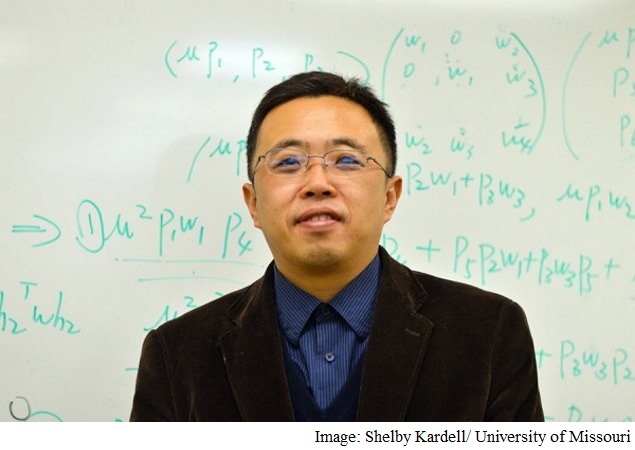- Home
- Science
- Science News
- 3D Facial Imaging May Help Early Detection of Autism in Kids: Study
3D Facial Imaging May Help Early Detection of Autism in Kids: Study

Researchers at the University of Missouri used advanced three-dimensional imaging and statistical analysis techniques to identify facial measurements in children with autism that may lead to a screening tool for young children and provide clues to its genetic causes.
"We want to detect the specific facial traits of the face of a child with autism," said Ye Duan, associate professor of computer science in the College of Engineering at MU.
"Doing so might help us define the facial structures common to children with autism and potentially enable early screening for the disorder," Duan added.
Expanding upon previous studies using two-dimensional imaging, Duan, working with Judith Miles, professor emerita of child health-genetics in the MU Thompson Center for Autism and Neurodevelopmental Disorders, used a system of cameras to photograph and generate three-dimensional images of children's faces.
The children selected were between 8 and 12 years old. One group of children had been diagnosed with autism by the Thompson Center; the other group consisted of typically developing children.
Researchers photographed the faces of children using three-dimensional imaging, which allowed scientists to measure distances along the curvature of the face rather than in a straight line as had been done in previous tests.
Duan then ran sophisticated statistical analyses to measure minute differences in the facial measurements of each group.
"It all started from a clinical observation. Over years of treating children, I noticed that a portion of those diagnosed with autism tend to look alike with similar facial characteristics," Miles said.
"I thought perhaps there was something more than coincidence at play. The differences were not abnormal, rather they appeared analogous to similarities observed among siblings. Using three-dimensional images and statistical analysis, we created a 'fine-tuned map' of children's faces and compared those measurements to the various symptoms they exhibit. By clustering the groups based on their facial measurements and recording their autism symptoms, we wanted to determine whether subgroups based on facial structure correlate with autism symptoms and severity," Miles added.
The group's analyses showed three distinct subgroups of children with autism who had similar measurement patterns in their facial features.
These subgroups also shared similarities in the type and severity of their autism symptoms.
The study was published in the Journal of Autism and Developmental Disorders.Catch the latest from the Consumer Electronics Show on Gadgets 360, at our CES 2026 hub.
Related Stories
- Samsung Galaxy Unpacked 2025
- ChatGPT
- Redmi Note 14 Pro+
- iPhone 16
- Apple Vision Pro
- Oneplus 12
- OnePlus Nord CE 3 Lite 5G
- iPhone 13
- Xiaomi 14 Pro
- Oppo Find N3
- Tecno Spark Go (2023)
- Realme V30
- Best Phones Under 25000
- Samsung Galaxy S24 Series
- Cryptocurrency
- iQoo 12
- Samsung Galaxy S24 Ultra
- Giottus
- Samsung Galaxy Z Flip 5
- Apple 'Scary Fast'
- Housefull 5
- GoPro Hero 12 Black Review
- Invincible Season 2
- JioGlass
- HD Ready TV
- Laptop Under 50000
- Smartwatch Under 10000
- Latest Mobile Phones
- Compare Phones
- Tecno Spark Go 3
- iQOO Z11 Turbo
- OPPO A6c
- Samsung Galaxy A07 5G
- Vivo Y500i
- OnePlus Turbo 6V
- OnePlus Turbo 6
- Itel Zeno 20 Max
- Lenovo Yoga Slim 7x (2025)
- Lenovo Yoga Slim 7a
- Lenovo Idea Tab Plus
- Realme Pad 3
- Garmin Quatix 8 Pro
- NoiseFit Pro 6R
- Haier H5E Series
- Acerpure Nitro Z Series 100-inch QLED TV
- Asus ROG Ally
- Nintendo Switch Lite
- Haier 1.6 Ton 5 Star Inverter Split AC (HSU19G-MZAID5BN-INV)
- Haier 1.6 Ton 5 Star Inverter Split AC (HSU19G-MZAIM5BN-INV)

















